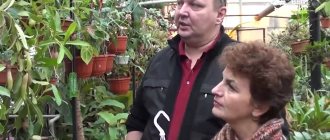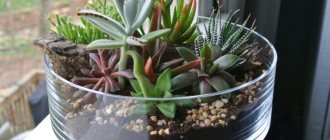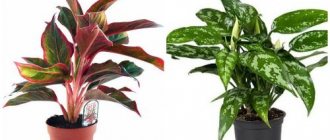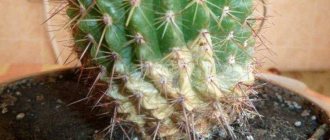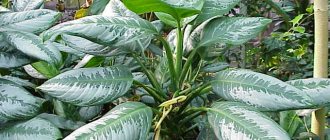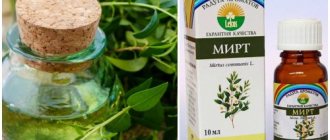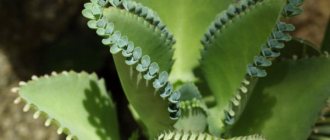- September 6, 2018
- Flowers
- Ksenia Stepanishcheva
Indoor plants perfectly decorate the home environment. Chrysanthemum looks great in a pot. Home care ensures beautiful flowering. There are many varieties of chrysanthemums, differing in types, shapes, colors, bush sizes, buds, so they are easy to choose for the interior of your home. The rules of care are described in the article.
A little history
Chrysanthemums are herbaceous annual and perennial plants belonging to the Asteraceae family, which includes 29 species. For thousands of years, they have grown in temperate and cool climates, usually in Asia.
In Europe, plants began to be cultivated in the 17th century. The chrysanthemum is considered a symbol of the imperial family in Japan. In China, the plant is considered medicinal; drugs are made on its basis for the treatment of gastrointestinal tract, eye ailments, migraines, and nervous diseases. The room also becomes more comfortable if there is a homemade chrysanthemum in a pot. How to care for it so that the flower actively develops? It is required to follow simple rules, which will be discussed below.
What is the difference between indoor and outdoor varieties?
Chrysanthemum is a genus of annual or perennial plants of the Asteraceae family. Includes about 29 varieties, growing throughout the world, especially in temperate and northern zones. For open ground, many gardeners choose Korean crops; for indoor cultivation, small-flowered ones. A potted flower is a decorative species. The homemade one differs from the street one in its short stem and compact size.
When choosing a plant, you should remember that there are varieties only for the home, miniature and heat-loving, as a rule, bred artificially for these purposes, and there are those that are suitable for open ground and gardens, they are oriented towards a cool life and differ significantly in size. Before purchasing, carefully study the description and characteristics of the chrysanthemum, conditions and growing parameters. For flowers, you need to prepare a place for planting in advance, select the temperature regime, soil and mineral fertilizers.
Beneficial features
The plant releases active substances - phytoncides, which effectively clean the air from gases and harmful impurities that enter the room from the street. It will be very useful to have this flower at home. A chrysanthemum in a pot can enliven any interior, because during the flowering period it is especially beautiful.
The aroma of the plant is useful - its smell heals the nerves and perfectly calms. This is why many people choose chrysanthemums in a pot. Care at home does not require much effort and ensures beautiful flowering and normal development.
Mr. Summer resident recommends: chrysanthemum immunity protector
Chrysanthemum has many beneficial properties. It contains phytocides, they purify the air from harmful substances and gases. When inhaling the aroma of a flower, a person calms down, thus the plant helps relieve stress.
The flowers contain essential oil that strengthens the immune system and stimulates the body's defenses, antioxidants, vitamins, chrysanthemum tea treats colds and coughs. To normalize sleep, you need to chew several chrysanthemum petals.
In Japan, the flower is a symbol of longevity and happiness; its image is present on the imperial seal. According to the signs of eastern countries, if you carry it with you, it means success in love, and when a girl takes a bath with petals, she will become very attractive to a man.
Choice
Not only high-quality care for chrysanthemums in a pot is important, but the right choice. You should not purchase plants with blooming flowers, as they quickly fade. The bushes must be formed. It is important that the leaves are green, the bottom is a little woody, and the roots are strong and strong. Spots, inclusions, and mechanical damage indicate that such a flower should not be purchased, since it will hurt and may even die.
For your home, it is better to choose a miniature chrysanthemum, which is 15-70 cm in height. The stems of the plant should be smooth or slightly fleecy. The leaves of a healthy flower are bright, soft green, dissected or jagged, smooth or with fibers. The diameter of the buds varies - from 2.5 cm to 25 cm. Flowering forms may vary. Flowers are divided into single, double, pompom and double row.
Particularly in demand are bush chrysanthemums, which have non-double flowers similar in shape to daisies, as well as varieties that form a ball when flowering. For terraces and loggias, cascade-shaped plants are chosen that are suitable for hanging gardening.
Mulberry-leaved, spherical, and shrubby varieties are ideal for the home. They also choose Korean, Indian, Chinese varieties, they bloom very luxuriantly. The color can be white, yellow, orange, pink, green. The cores usually contrast in color with the petals.
According to reviews, many people like chrysanthemum in a pot. Home care is easy. If you follow it, you can achieve beautiful flowering. The main nuances of care are presented below.
Lush flowers on an astonishing scale
Chrysanthemums are so popular at the end of the season not only because the color palette ideally represents the so-called autumn palette. The colors of chrysanthemum flowers really perfectly highlight the crimson-fiery autumn colors. But no color nuances can overshadow the main thing - tireless and very long flowering, unique in its scale and abundance. In addition, potted chrysanthemums have a wide variety of varietal colors.
Potted chrysanthemum. © bittster
Potted chrysanthemums that cannot withstand winter frosts can be grown in two forms:
- Seasonal indoor or balcony annual;
- A perennial that is put indoors for the winter and pruned after a dormant period, stimulating growth.
Potted chrysanthemums can also be planted in open soil - but then they will need to be dug up and transferred to pots for wintering. Therefore, they are most often grown in container culture.
Chrysanthemums in container form differ from their garden counterparts. They develop in the form of dense, cushion-shaped bushes, formed by pruning and bred specifically to produce specimens of increased density. Numerous shoots become woody, dotted with simple carved leaves, which most often do not create a particularly impressive crown, but merely serve as a background for the flowers. They bloom at the tops of the shoots in such numbers that they create continuous caps.
Classic basket inflorescences of potted chrysanthemums can be simple or densely double, with wider or very narrow reed petals. And the color, which includes all the warm shades of white-cream, yellow, orange, red, purple, brown, can be either monochromatic or combined and even contrasting.
Today, new blue-flowered chrysanthemums and original green-flowered plants are in fashion, as well as varieties with dazzling acrylic colors. Large-flowered varieties are even more popular - hybrids with spherical, pom-pom, anemone-shaped inflorescences, which decorate gardens throughout the warm months, and bloom indoors throughout the fall and winter.
Potted chrysanthemums vary in size. For indoor cultivation and indoor cultivation, mini-varieties are chosen, the height of which does not exceed 30 cm. But the specimens intended for open air are twice as large, sometimes reaching 1 meter in height and diameter. Potted chrysanthemums can be standard, shaped like a ball, squat, or even splayed. In a word, there is plenty to choose from. Moreover, indoor chrysanthemums are sold in bloom throughout the year, while garden chrysanthemums today appear on the shelves in the spring, specially driven out at atypical times. But such “early maturing” plants are just a temporary decoration for both the house and the garden, which will have to be thrown away. If you want to preserve chrysanthemums, buy them during the typical flowering time - from late summer through autumn. When purchasing, be sure to check exactly what conditions the chrysanthemums are accustomed to and how they need to be grown: sometimes locally distilled chrysanthemums require specific care.
Potted chrysanthemum. © Karen Maraj
In order for potted chrysanthemums to bloom truly profusely, they will require simple but constant care and rather specific conditions. They bloom luxuriantly at low temperatures, and this requirement can be ignored only when grown as an annual plant or taken out into the fresh air. Watering and fertilizing are frequent, but other than that, there are usually no difficulties with chrysanthemums.
Lighting and temperature
How to care for indoor chrysanthemum? Compliance with lighting and temperature regulations is required. Pots should be installed on the eastern or western side. In the north, chrysanthemums cannot bloom, and in the south they wither and get sick. Direct sunlight and extreme heat are harmful to plants. The sun can damage the leaves and cause burns. It is advisable to install pots on a lighted, cool balcony or loggia.
If the plants do not bloom and disappear, then you need to check whether they have enough light. Poor lighting, as well as excess lighting, is harmful to chrysanthemums. Daylight hours for them should be no less than 7 and no more than 10 hours a day. It is important that in summer the temperature is +20 ... +23 degrees, in autumn and spring - +15 ... +18, and in winter - +3 ... +8. If these standards are observed, many buds appear. Flowering will be lush and long lasting.
Diseases and pests of indoor chrysanthemum
During the growing season on the windowsill of a city apartment, chrysanthemum can suffer from various parasites and diseases.
Fungal diseases of chrysanthemums
Such diseases occur due to insufficient air circulation in the room, as well as high acidity of the soil, elevated temperature and excess nutrients with a high proportion of nitrogen.
Chrysanthemum leaf spot or septoria blight
The main symptom of the disease is the appearance of spots on the leaves. The defective areas turn yellow and then turn black. The main preventive measure is pruning the affected vegetative parts of the plant. The crop can be cured using fungicides.
Rust
The first signs of infection are determined by the appearance of orange powdery spots on the outer surface of the leaves of the crop. When severely damaged, the chrysanthemum quickly weakens and does not form buds.
Preventative measures include removing affected leaves and thinning the bush to improve ventilation. When watering, avoid getting droplets of moisture on the leaves and shoots of the flower. To treat rust, fungicides are used, for example, a 1% solution of colloidal sulfur.
Wilting chrysanthemum leaves
Fusarium disease is accompanied by browning and wilting of leaf blades. Diseased plants are stunted and flowering stops. The fungus blocks the channels that supply nutrients and water to the aboveground part of the crop.
Prevention of fusarium disease involves pruning all affected parts of the chrysanthemum. The use of resistant varieties or increasing the acidity of the nutrient substrate to 6.5 pH will help prevent the development of the disease.
Powdery mildew
The first symptom of this disease is the appearance of an ash-gray powdery coating on the surface of the leaves. Infectious spores actively multiply in a humid environment. To prevent the development of infection, plants are sprayed with fungicides, for example, Fundazol or Bordeaux mixture.
Viral diseases of chrysanthemums
The most dangerous viral infection for chrysanthemums is mosaic. Symptoms of this disease can be identified by yellow, drooping leaves. Diseased crops are stunted and form small inflorescences. To prevent further development of the mosaic, it is necessary to treat the above-ground part of the crop with fungicides.
This video explains how and why chrysanthemums need to be treated almost immediately after purchase:
Watering
If you have acquired a home chrysanthemum, care involves watering. This must be done often. Flowers are watered in the evening, when the sun has set, 2 times a week. In winter, watering is reduced. The need for the procedure can be determined by the drying of the top of the soil. The main thing is that the soil does not dry out, as this causes yellowing and falling of the leaves.
Chrysanthemums are lovers of water, but too much of it is harmful to them. When there is heavy flooding, mold and fungi form in the ground, and the flower begins to hurt. You should not pour water into the pan. It is important to water frequently, but not abundantly. The water should be warm and settled. Spraying from a spray bottle is necessary. Humidifiers should be installed near plants.
Chrysanthemum storage in winter
As we have already said, the crown of a flower can be trimmed and grown throughout the winter, but some gardeners send the crop to a “resting state” to obtain abundant flowering. In practice, several methods of storing chrysanthemums are used.
Chrysanthemum on verandas and insulated loggias
With the arrival of winter, it is necessary to reduce watering of the crop (once every 4 weeks). After dropping the last inflorescences, the shoots are cut to 15 centimeters, then the plant is insulated and stored on the balcony at a temperature of about 5 degrees.
With the arrival of spring, when new shoots appear on the chrysanthemum, the flower is returned to normal conditions.
Chrysanthemum care and storage at home
If the apartment does not have a balcony or basement, then the crop can be left to winter on the windowsill. In this case, the grower must remove drying leaves and buds, while the watering regime remains the same.
Trimming
If you follow the rules of care at home, your indoor chrysanthemum will bloom beautifully. And to prolong this stage, pruning and shaping of bushes is required. In order for the plants to bloom magnificently, their tops are pinched 2 times during the growing season. This procedure is performed before the appearance of new buds (early March) and before the appearance of buds (mid-August).
It is necessary to cut off thin, protruding, curved shoots and yellow leaves. This way you can achieve the correct shape. If the branches have become elongated for the winter, they are pruned. By autumn, without pruning, the bushes will be shapeless, elongated, and flowering will be uneven.
How to water home chrysanthemums and what humidity to maintain
Blooming beauties love moderate watering. They do not tolerate either excess moisture or prolonged drought. You need to ensure that the soil is always moist.
It is recommended to drain excess moisture immediately after watering. And before the next application of water, the soil surface should dry out just a little.
As for humidity, it is sufficient for chrysanthemums, subject to timely watering. During the heating season, you can spray the bushes with water from a spray bottle. The main thing is to avoid getting on the inflorescences.
Feeding
How to care for a chrysanthemum in a pot to achieve beautiful and long-lasting flowering? It is necessary to feed them. Fertilizers are applied after replanting the bushes. This procedure uses a solution of “Kristalon”, “Bona Forte” or another fertilizer, which consists of nitrogen, magnesium, potassium, zinc, and phosphorus. Feeding is necessary for the development of the plant and ensures good flowering.
During the formation of bushes, nitrogen fertilizers are used. Before flowering, phosphorus-potassium products are used. An infusion of bird droppings, diluted with water (ratio 1:30), is suitable. The solution is applied until the buds appear every 5 days.
Diseases
The plant begins to wither when the microclimate is not suitable for it and the conditions of its maintenance are violated.
No flowering
Why chrysanthemum grows but does not bloom, there are 2 reasons:
- Lack of light. Do not place the pot in a dark place in spring and summer, otherwise the bush will not bloom in the fall.
- Lack of nutrients or their excess. Use fertilizers in a timely manner, but do not overdo it with fertilizers.
Leaves wither
Chrysanthemum may wilt due to lack of watering. Always monitor the soil moisture in the pot. Increased temperature in the house also contributes to the wilting of plant leaves. Monitor the microclimate to save the flower.
Dew
The white coating is caused by powdery mildew. It occurs due to high temperature and humidity in the house. To avoid this, it is recommended to ventilate the room. In order to stop the spread process, remove the affected leaves and treat the chrysanthemum with phytosporin.
Important: Powdery mildew is contagious. Remove the diseased flower from healthy plants until it is completely cured.
Rust on leaves
This disease manifests itself as yellow spots that turn brown, and then the chrysanthemum leaves curl. Rust also appears at high temperatures and humidity. Treatment occurs with the help of fungicides; before this, damaged leaves are removed and the flower is removed from others for quarantine.
Spots on leaves
Septoria spotting is manifested by the appearance of round black spots. In this case, nothing can help the chrysanthemum, and it must be burned. To prevent this disease, treat the plant with preparations containing copper.
Home flowers decorate the interior, creating a pleasant atmosphere and comfort. You learned from the article how to care for a chrysanthemum and make it bloom. Follow all the above rules so that the beautiful chrysanthemum will delight you not only in the garden, but also at home.
Transplantation
How to care for home chrysanthemum so that the flower develops normally? After acquisition, the plant is transplanted into a new container that has drainage holes. It is advisable to choose a ceramic or clay pot. The new container should be 2 cm wider and 1.5 liters deeper than the previous one.
Young bushes need to be replanted once a year, and adults - once every 2 years. Active growth time begins in March. The plant can be transplanted into a new pot. Before this, the chrysanthemum is prepared. The composition of the soil should be the same (soil, turf or peat, deciduous soil, humus, sand in the ratio 4:4:1:1:1).
To disinfect the substrate, it is poured with boiling water with a weak solution of potassium permanganate or calcined in the oven for 3 hours at 100 degrees. After pouring boiling water, dry it. Store-bought soil mixture should not be processed. Expanded clay and vermiculite serve as drainage. The bush must be replanted completely or divided into fragments. New chrysanthemums are formed from the separated parts.
How to properly replant a bush immediately after purchase
Only after purchasing a flower, it is necessary to create the most favorable conditions for it as soon as possible, so that the adaptation period passes with the least harm to the chrysanthemum, and it continues to delight with beautiful flowers in the future.
The home look, unlike the garden look, is highly dependent on sunlight. You must try not to flood the soil, otherwise the bush will die.
This is interesting : a purchased plant is sometimes transplanted into the garden, and taken back to the house for the winter.
All the plants purchased in the store were grown in greenhouse conditions, about which most ordinary people have no idea. Therefore, experts recommend replanting to make the flower’s adaptation period easier. It is optional, but useful.
This should be done no earlier than 1.5-2 weeks after the chrysanthemum appears in the new home. If you carry out the “relocation” right away, the bush may not be able to withstand the double load placed on it and will wither away.
First, the chrysanthemum adapts to the local microclimate with the old soil, and then it is planted in new soil.
The procedure is no different from an annual planned transplant for the purpose of renewal.
Reproduction
Judging by the photo, the chrysanthemums in pots are very beautiful. Therefore, many housewives breed several species at once. Their reproduction occurs by seeds, dividing the bush or cuttings. When flowering is completed, seeds are formed in the bud, which are used for sowing.
At home, chrysanthemums are rarely grown from seeds; this is a long method. This requires seedling pots or containers, as well as greenhouse growing conditions with normal humidity and temperature. Seeds are placed in the soil and covered with a thin layer of sand. Then the container should be sprayed with warm water from a spray bottle, covered with film and placed in a cool place. The film must be opened periodically to ventilate and eliminate condensation.
After half a month, sprouts form. The seedlings are placed on the windowsill, and after 3-4 leaves have formed, they are transplanted into separate pots. After rooting, pinch the top to create a round bush shape. This growing process takes longer.
Gardeners usually choose budding and cuttings. If the bush is propagated by budding, after wintering it must be pulled out of the pot, the earthen lump removed and the roots divided into parts. From 1 bush you get 5-6 bushes. Divided plants should be planted in pots with fertile soil. Young seedlings require frequent watering. It should be watered every 2-3 days. It is better to propagate by cuttings in early spring.
After shoots appear on overwintered stems, cuttings 12 cm long emerge from the side stems. To quickly root them, the lower part is placed in a solution of growth stimulants, for example, “Kornevin”. The cuttings should be planted in the prepared substrate to a depth of 1.5 cm.
The container will be a box or plastic cups with holes in the bottom. After planting the cuttings, the containers must be covered with a transparent film to ensure a greenhouse effect. The film is regularly opened slightly for ventilation. As chrysanthemums grow, they are transplanted into pots with a diameter of 10-13 cm. When new leaves appear, the top is pinched, which is necessary to stimulate the growth of side shoots.
Propagation of chrysanthemums at home
Growing from seeds does not allow preserving the varietal characteristics of a flower, so many gardeners propagate the crop using root suckers . To do this, you need to carefully separate the cuttings from the mother bush and plant them in small containers. Next, the plants are watered and covered with plastic cups, waiting for rooting.
The process of rooting cuttings can be divided into stages:
- cutting young shoots from the mother bush;
- filling a transparent container or other container with washed river sand;
- planting cuttings;
- shelter arrangement;
- transplanting seedlings into a pot.
When caring for plants, periodic watering of the nutrient substrate and ventilation are necessary.
Bloom
If you grow chrysanthemums in a pot, care at home should be individual. Then beautiful flowering is ensured. Usually the duration of this period is more than a month, the process occurs in the autumn period. For lush flowering during the growing season until August, you need to pinch the shoots 2-3 times. For the active development and formation of a larger number of buds, biological products are used - “Bud”, “Epin”, “Zircon”. Each product comes with instructions for proper use.
The use of a light solution of potassium humate leads to rapid flower growth, an increase in the number and size of buds. In the future, when flowering, regular pruning of dried stems and faded buds is required so that there are no favorable conditions for pests. In addition, this spoils the decorative appearance.
If an indoor chrysanthemum has stopped blooming, care at home requires urgent rehabilitation. It is necessary to shorten the stems to 10-15 cm. The plant is installed on a balcony, in a cellar, pantry or window sill. It can be replanted in early spring.
Pests of chrysanthemums
In addition to diseases, indoor chrysanthemum can suffer from parasite invasion. The main flower pests include leaf nematodes, aphids and spider mites.
Leaf nematode
This parasite is a microscopic roundworm. The pest overwinters in the soil or affected remains. The worm moves from the ground up the stem, and brown spots appear on the affected areas.
Defective places on the leaves merge into a single whole, which leads to drying out and falling off of the vegetative organ. Prevention of the appearance of the pest consists of proper watering of the soil (avoid getting water on the leaves) and mulching. Insecticides are used to completely destroy the parasite.
Aphids and spider mites
These pests parasitize many indoor plants, including chrysanthemums. Insects suck the juices from the crop, which causes the flower to dry out. Parasites can be washed off with a stream of water or destroyed using a soap solution with the addition of copper sulfate (20 grams of the specified substance per 10 liters of water).
Features of winter care
In winter, care for home chrysanthemums in pots is also required. After flowering is completed, the bushes must be trimmed, leaving 15 cm of length and placed in a dry place where the temperature is 5-8 degrees and there is good light. Watering should be done approximately once a month.
If it is not possible to take the flower to a cool place, then leave it on the windowsill. Flowers must be trimmed, dry buds, leaves, and branches removed. In warm conditions, watering is indistinguishable from the growing season.
How to care in spring and summer
In the spring, we begin the awakening of the flower by replanting it in new soil and in a larger pot (by 2-3 centimeters). If sub-zero temperatures are no longer expected, we take them outside or plant them in open ground.
After two weeks, we begin to feed with nitrogenous fertilizers. When the buds begin to set, it is necessary to apply fertilizer for flowering plants, potassium-phosphorus minerals.
Homemade chrysanthemum also needs pinching. Thanks to this, the flower retains its spherical shape and produces young buds.
Care after winter
In mid-March, spring work is carried out, which includes the following stages:
- Transplanting the plant into nutrient soil. For 1 low-growing chrysanthemum you need a pot 9 cm in diameter. And for 3 plants, choose 11 cm. All 3 cuttings must be planted along the edges of the container.
- The flower should be placed in a sunny part.
- It is necessary to regularly water and feed the plant with nitrogen fertilizers. The first procedure is performed after 2 weeks. To speed up the growth of greenery, nitrogen fertilizers are required, and before flowering, products with phosphorus and potassium are used. Stimulants and regulators are used to strengthen plants.
Later you need to prune the chrysanthemum. Then its shape will be beautiful. It is also necessary to pinch out fresh shoots to keep the plant miniature.
Temperature conditions
Potted chrysanthemums (both garden and indoor) love cool weather, especially at the flowering stage. These are not the most heat-resistant crops, which are comfortable only in typical autumn conditions. The higher the air temperature, the faster the inflorescences fade and the less chrysanthemums produce new buds. That is why it is better to keep even miniature indoor plants outdoors during flowering. The optimal temperature regime for potted chrysanthemums is from 10-15 to 17-20 degrees Celsius or a little more. If chrysanthemums are in temperatures above 21-22 degrees during the flowering period, they will not be able to set buds normally for flowering next year, and even a cold winter will not give the expected effect.
Potted chrysanthemum. © typesofflower
Actions in the absence of flowering
If proper care is provided, flowering occurs in the fall. The absence of this phenomenon indicates a violation of the rules of care. With late pruning, lack of light, unsuitable soil and lack of fertilizing, buds do not form. With these problems eliminated, the bush will grow and delight with beautiful flowers.
During flowering, it is necessary to remove dried foliage and flowers, otherwise the chrysanthemum dries out. The indoor plant perfectly decorates the windowsill, balcony and loggia. Thanks to the variety of flower shapes, you can choose the right variety. And with proper care, the plant will always look attractive.
Is it possible to replant a flowering plant?
The favorable period for a flower to change its habitat is in the spring, when there are no buds and the plant has barely emerged from its dormant period. But in some exceptional cases, changing the schedule is allowed.
Important : for any plant, replanting is very stressful, so after this procedure you should not expect abundant first flowering from the bush.
The season for purchasing chrysanthemums begins at the end of summer and lasts until late autumn. At this time, it is permissible to replant after purchase without causing severe damage to the plant. The main thing is not to let the flowers fall off during the process and not to damage the root system.
